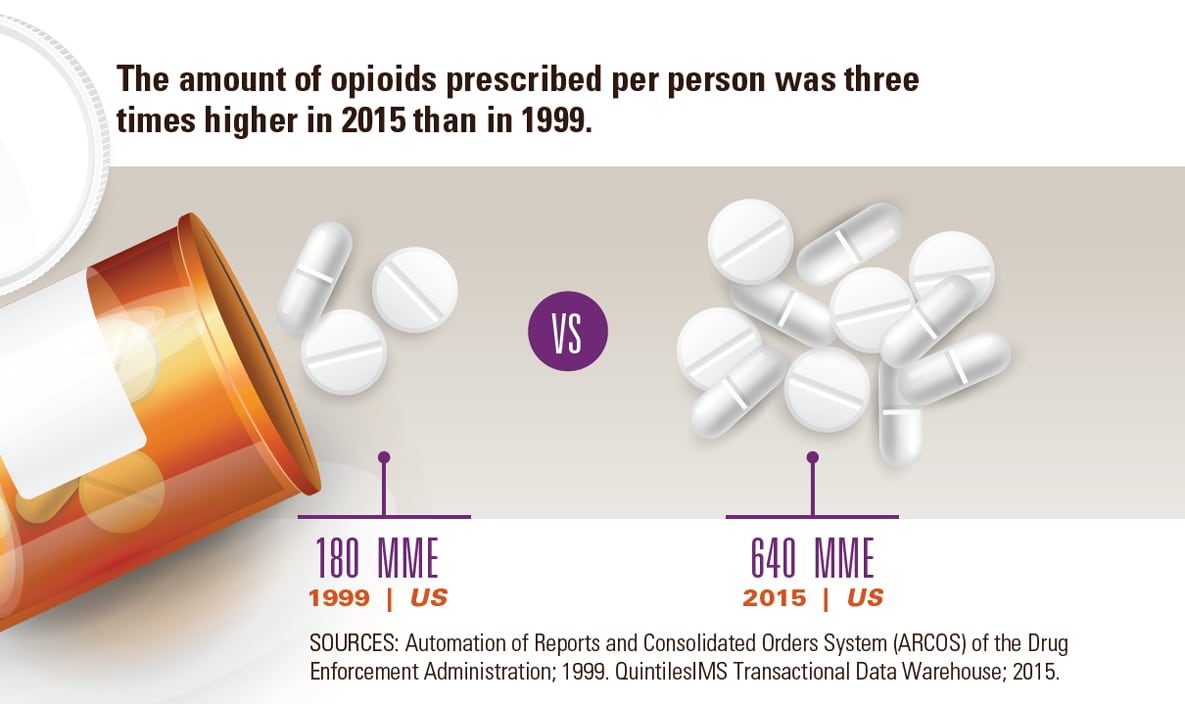

Controversy surrounds the effects of policies to reduce opioid prescriptions on suicide rates. There are concerns that rapid reductions in prescription opioids might provoke increased suicide risk among people who become desparate after they are taken off opioids. According to a new study at Columbia University Mailman School of Public Health and Columbia University Irving Medical Center, however, changes in regional opioid prescribing and regional suicide rates tend to move in the same direction. This relationship held for rates of opioid prescribing, rates of high-dose prescribing and long-term prescribing, and having multiple opioid prescribers. Until now it was not known whether certain opioid prescribing patterns were associated with particularly elevated suicide risk.
Overall opioid prescribing declined for each of the measures during the 2009–2017 period and the overall rate of total suicide deaths increased from 13.80 to 16.36 per 100,000 persons. By evaluating regional changes, however, the researchers estimate that had opioid prescribing remained constant rather than decreased, the national rate of suicide would have risen even faster than it did.
The findings are published online in the American Journal of Psychiatry.
Alternately, having any opioid prescriptions and having three or more opioid prescribers were each negatively associated with unintentional opioid-related deaths in people in the age ranges of 10- to 24 and 25- to 44. For some opioid prescribing measures, negative associations were also observed with unintentional overdose deaths involving opioids among younger people.
“The relationship between opioid prescribing and suicide risk is a complex one. This is particularly the case when people have their opioids tapered,” said Mark Olfson, MD, MPH, professor of epidemiology at Columbia School of Public Health and Elizabeth K Dollard Professor of Psychiatry, Medicine and Law at Columbia University Irving Medical Center. ”People can become desperate if their pain is not well controlled. Yet opioids also pose a greater risk of overdose than any other drug class and approximately 40 percent of overdose suicide deaths in the U.S. involve opioids. At a population-level, the national decline in opioid prescribing over last several years appears to have reduced the number of people who died of suicide.”
Analyses were based on data from the 2009–2017 U.S. national IQVIA Longitudinal Prescription Database and National Center for Health Statistics mortality data. Information was based on opioid prescription, with high-dose prescriptions (>120 mg/day morphine equivalents), with long-term prescriptions (>60 consecutive days), and with prescriptions from three or more prescribers. For geographic aggregation, the researchers used states and commuting zones as defined by the U.S. Department of Agriculture.
The researchers looked at opioid prescribing measures for four age groups: 10–24, 25–44, 45–64, and 65 years or older, as well as males and females. Because length of opioid prescribing is strongly associated with persistent opioid use the researchers included a measure of percentage with opioid prescriptions for long-term opioid prescriptions measured at greater then or equal to 60 consecutive days. Also, because of the association between having multiple opioid prescribers and opioid overdose risk, Olfson and colleagues included a multiple prescriber measure as the percentage with three or more opioid prescribers during a year.
Among individuals in the 45- to 64-year age group, change in regional suicide deaths was positively associated with change in regional opioid prescriptions and change in percentage with at least one opioid prescription. Overall, the association with change in suicide deaths was significantly stronger in the West than in the East or the Midwest.
“If opioid prescribing per capita had held constant from 2009 to 2017, there would have been an estimated 10.5 percent more suicide deaths involving opioids in 2017,” noted Olfson. The corresponding estimated percentage increases in opioid-related suicide deaths were 15 percent, 9 percent, 9 percent, and 19 percent, respectively, for at least one opioid prescription, high-dose prescriptions, long-term prescriptions, and three or more opioid prescribers.
In the U.S., geographic regions with the greatest declines in people filling opioid prescriptions also tended to have the greatest declines in total suicide deaths. Had the national decline in opioid prescriptions between 2009 and 2017 not occurred, there would have been 3 percent more suicide deaths overall in the U.S. according to the research team. For four of five prescribing measures, decreasing regional opioid prescriptions were also related to declining total opioid-related overdose deaths.
“Although the present population-level research cannot establish that opioid prescriptions cause deaths by suicide, the results are consistent with the view that opioid prescription policies and practices should give careful attention to possible connections between prescription opioids and suicide risk,” noted Olfson.

